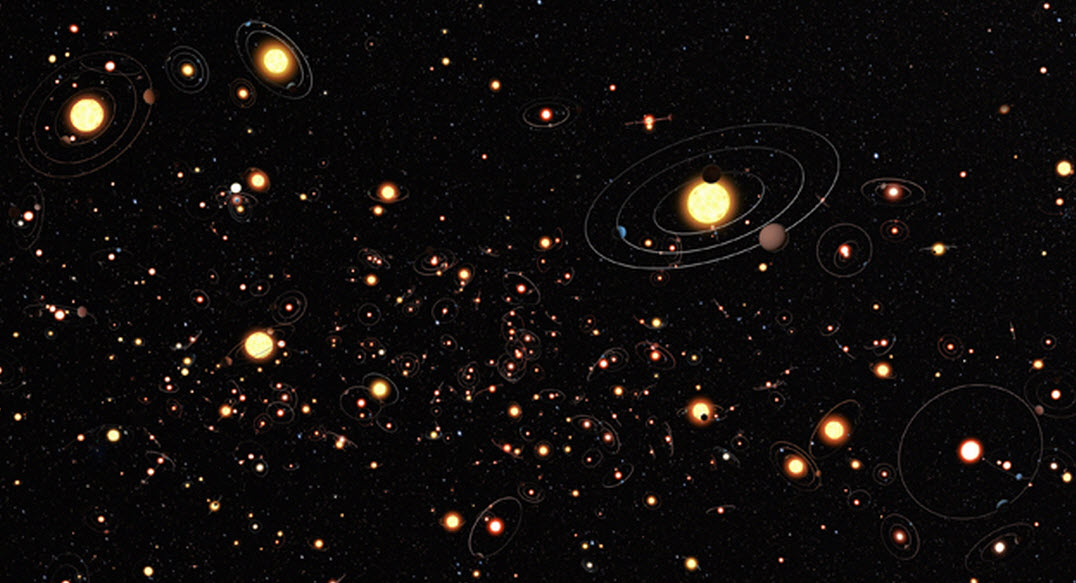New astronomy innovations expand our view of the universe
January 12, 2012
Fermilab and Berkeley Lab scientists have built the biggest maps of dark matter yet, using a process called coaddition to remove errors caused by atmospheric effects and to enhance very faint signals coming from distant parts of the universe. Source: Berkeley Lab.

(Credit: NASA/ESA/ESO)
Our Milky Way galaxy contains at least 100 billion planets, according to a detailed statistical study based on the detection of three exoplanets. Source: NASA JPL.
The Stratospheric Observatory for Infrared Astronomy (Sofia), a telescope mounted in the back of a converted 747 jet, has come up with a bounty of data taken on the fly in 35 flights in the past year, shedding light on the far-flung Orion Nebula and Pluto. Source: BBC News.

